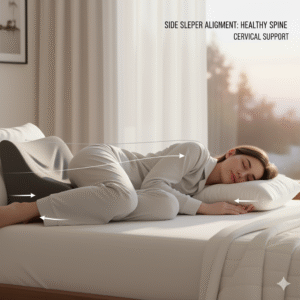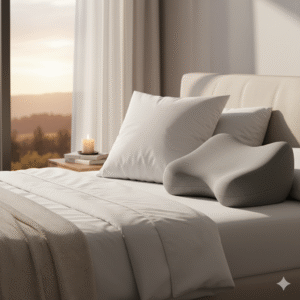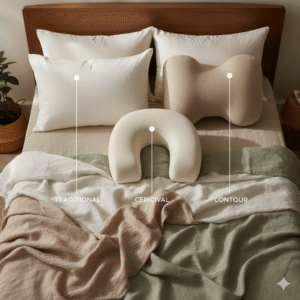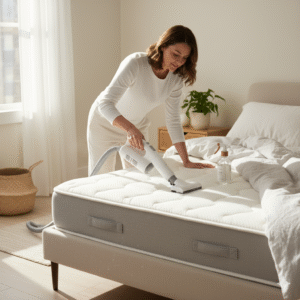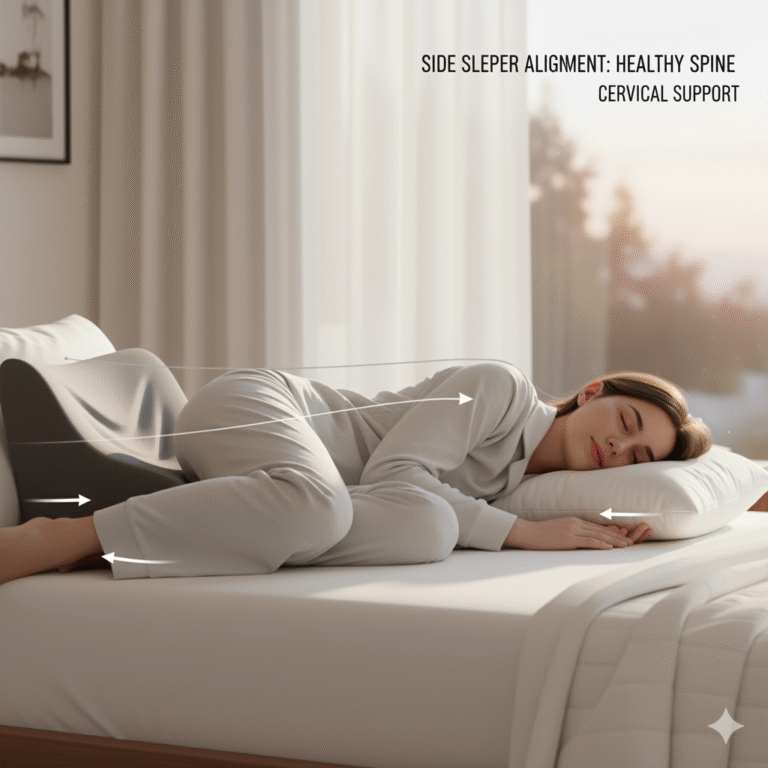Pros and Cons of a Metal Bed Frame
Understanding the pros and cons of a metal bed frame helps you choose a sturdy, stylish foundation that fits your budget and sleep needs. Below, we give quick answers first, then dive deep. For a broader look at frame types, see our modern bed types guide.
Key Takeaways on the Pros and Cons of a Metal Bed Frame
In one scan: metal frames are durable, affordable, and versatile—but can squeak and may rust without simple maintenance.
- Durable & budget-friendly: Great lifespan and value, especially for guest rooms and everyday use.
- Style range: Minimalist to vintage—easy to match with wood nightstands or upholstered headboards.
- Potential downsides: Noise over time, cold-to-the-touch feel, and rust risk in humid rooms.
- Fixes are easy: Tighten joints and add pads to stop squeaks; choose powder-coated frames to resist rust.
- Pros and cons of a metal bed frame: Best pick when you want strength, storage space, and simple care.
Advantages of Metal Bed Frames
Short version: metal frames win on strength, price, and flexibility. Here’s what that means at home and over the years.
1) Durability & Longevity
At their best, metal frames stay square and supportive for years, resisting warping and cracks that can plague wood. Heavier gauges and welded joints add stability, while powder coats protect from moisture. If you need a frame for everyday use or heavier sleepers, metal’s structural strength is a clear plus in the pros and cons of a metal bed frame. According to the American Academy of Sleep Medicine, strong support structures help extend mattress performance and longevity.
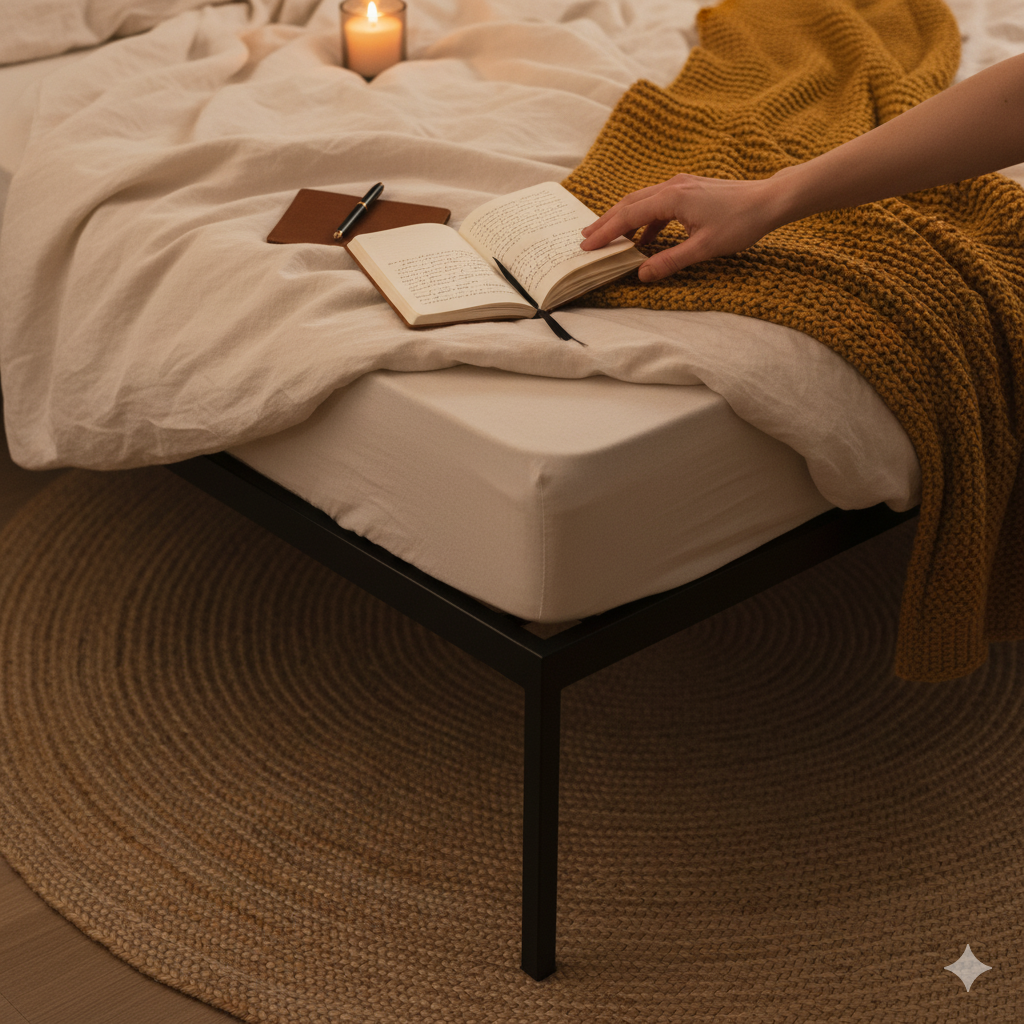
2) Pest Resistance
Metal isn’t a food source for termites and provides fewer hiding spots for bed bugs. That makes it a smart pick in warm or humid climates. Keep the whole sleep setup fresh with our mattress hygiene guide.
3) Affordability
Lower-cost manufacturing and flat-pack shipping keep prices down. Even entry-level frames often include noise-reduction pads, headboard brackets, and high clearances for storage—strong value in the overall pros and cons of a metal bed frame.

4) Stylish Versatility
From matte black minimalism to ornate vintage scrollwork, metal works across aesthetics. It’s easy to blend with wood nightstands, woven baskets, and plush textiles for warmth. Want inspiration? See the best queen-size bed frames for styles that mix metal with modern design.
5) Low Maintenance
A soft cloth and mild soap usually do the trick—no waxing or deep cleaning required. That simplicity is a quiet advantage in the pros and cons of a metal bed frame, especially for busy households.
6) Space Optimization
Many metal frames offer generous under-bed clearance for bins, bags, or drawers—ideal in apartments and small rooms. Pair your frame with smart storage from our under-bed storage guide to reclaim square footage.
7) Portability & Easy Assembly
Metal frames are typically lighter than solid wood and assemble with basic tools. Foldable or modular designs pack down for moves and small stairwells. If you relocate often, this can be the deciding factor among the pros and cons of a metal bed frame.
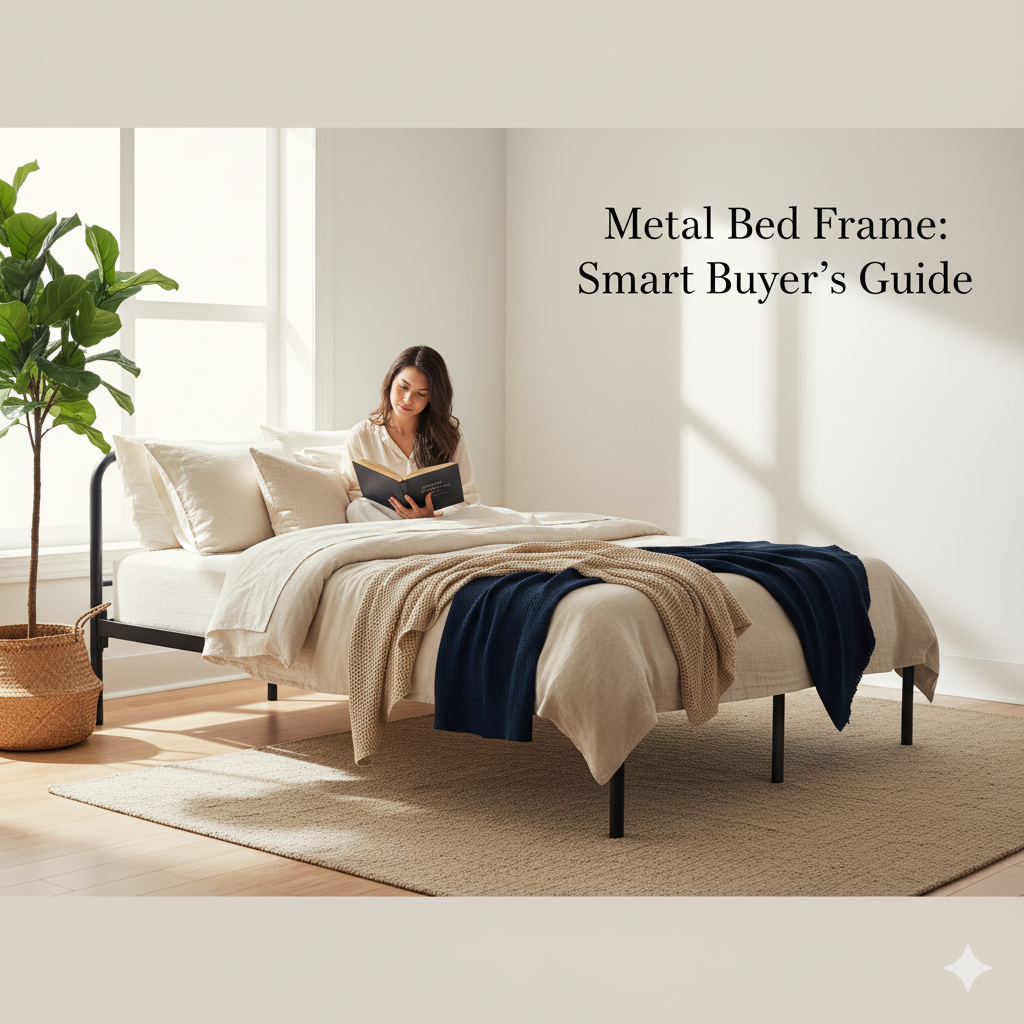
Disadvantages of Metal Bed Frames
Short version: noise and rust are the usual complaints—but they’re preventable with quick, low-cost fixes.
1) Noise Potential (Squeaks & Creaks)
Metal joints can loosen with movement, causing squeaks. The easy remedy: tighten hardware quarterly, insert felt or rubber washers, and add anti-slip pads on slats. Follow our step-by-step squeak-stopping guide to keep nights quiet.
2) Rust Risk in Humid Spaces
Powder coatings and galvanized finishes help, but chips and scratches can invite corrosion. Wipe spills, avoid placing frames directly against open windows, and touch up exposed metal. The National Sleep Foundation notes that regular inspection of sleep furniture supports long-term sleep quality.
3) Cooler to the Touch
Metal doesn’t retain heat like wood or fabric. It won’t affect mattress performance, but it can feel cool in winter. A padded headboard, quilts, and textured throws warm the look and feel.
4) Limited Personalization
Compared with wood (which can be carved or stained), metal is less DIY-friendly. You can repaint with enamel or rust-proof spray, but intricate changes are tricky. If deep customization matters, you may prefer wood—compare options in wood vs. metal frames.
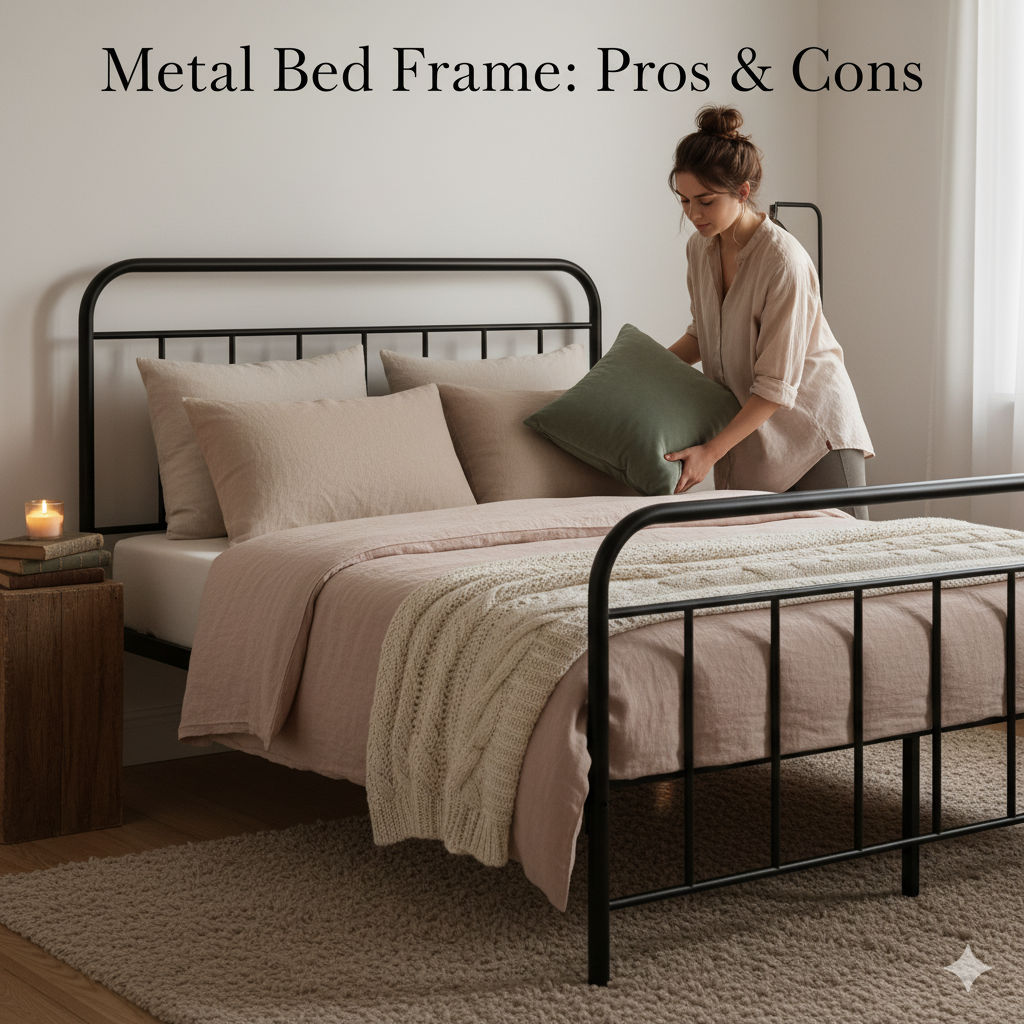
Metal vs. Wood: A Quick Comparison
Answer first: choose metal for value, strength, and low maintenance; choose wood for warmth, customization, and a quieter feel.
| Feature | Metal Bed Frames | Wood Bed Frames |
|---|---|---|
| Durability | Excellent structural strength; resists warping | Strong, but can warp/crack if humidity fluctuates |
| Noise | Can squeak if hardware loosens; easy to fix | Typically quieter under movement |
| Maintenance | Low: wipe down, tighten bolts, touch-up paint | Moderate: dusting, polish, occasional re-finishing |
| Style/Finish | Minimalist, industrial, vintage, hotel-style | Warm, natural grain; highly customizable |
| Cost | Often lower for similar strength | Varies; solid hardwood is pricier |
| Pest/Mold | Not a food source; minimal mold risk | Vulnerable to termites and trapped moisture |
Quick Pros & Cons Chart
Skim this if you’re deciding today—fast clarity on the pros and cons of a metal bed frame.
| Pros | Cons |
|---|---|
| High strength for the price | Can squeak if joints loosen |
| Pest- and mold-resistant | Surface can feel cool |
| Low maintenance; easy cleaning | Limited DIY personalization |
| Great storage clearance | Rust risk in humid rooms |
Care & Maintenance Checklist
Do these quick tasks and most cons disappear—keeping the pros and cons of a metal bed frame firmly in your favor.
- Quarterly: Tighten all bolts; add felt/rubber washers where metal meets metal.
- Biannually: Inspect the coating for chips; touch up with rust-inhibiting enamel.
- Anytime: Wipe spills immediately; avoid placing frames against open windows.
- Storage: If disassembling, label parts, bag hardware, and wrap rails to prevent scratches.
- Mattress support: Use closely spaced slats or a bunkie board for foam and hybrids.
For deeper preventive tips, see metal bed frame maintenance and our mattress hygiene checklist.
Popular Metal Frame Styles (and How to Use Them)
Pick a finish and silhouette that supports the look you already love—here’s how to dial it in.
Minimalist & Modern
Slim rails, low profiles, and matte finishes blend with uncluttered rooms. Add plush textiles to warm the cool metal and soften edges.
Industrial Loft
Heavier gauges, visible joints, and darker finishes pair well with brick, concrete, and reclaimed wood. Balance grit with linen bedding and warm table lamps.
Vintage & Cottage
Curved headboards and lighter finishes (cream, brushed brass) deliver charm. Layer quilts and floral duvets for texture.
Hotel-Style Luxe
Crisp lines and higher headboards make a statement. Keep the palette simple: white sheets, tailored duvet, two Euro pillows, one lumbar.
For more style direction—and to weigh warmth versus structure—compare wood vs. metal bed frames and browse queen-size favorites.
Editor’s note: Because the pros and cons of a metal bed frame depend on your climate, room size, and style, start with noise prevention and storage needs—then choose the finish you’ll love for years.
FAQ
Do metal bed frames cause mattresses to sag?
Not if the support is right. Foam and hybrid mattresses need closely spaced slats (generally 3″ or less) or a solid base. Add a bunkie board if gaps are wide.
Are metal bed frames good for heavy people?
Yes—look for higher weight ratings, welded joints, center support bars, and thicker gauge rails. These features keep the frame square and quiet over time.
What’s the best paint for a metal bed frame?
Use rust-inhibiting enamel or spray designed for metal. Lightly sand glossy areas, clean, prime bare spots, then apply thin coats for an even finish.
Can I attach a headboard to any metal bed frame?
Most modern frames include universal brackets. If yours doesn’t, add an adapter kit. Confirm hole spacing and height before ordering.
How do I stop squeaks quickly?
Tighten hardware, add felt/rubber washers, and place anti-slip pads between slats and the mattress base. See our full guide to a quiet metal frame.
Is a wood frame better than metal?
It depends. Wood is warmer and often quieter; metal is stronger for the price and easier to maintain. Compare details in our head-to-head guide.
What about eco-friendly options?
Choose durable, repairable frames and avoid disposable designs. If you lean wood, see our eco-friendly bed frame guide for sustainable materials.
Final Thoughts
The pros and cons of a metal bed frame come down to priorities: choose metal for strength, value, storage, and simple care; choose wood for warmth and customization. Ready to compare specific models? Start with editor-vetted favorites and use our maintenance checklist to keep any frame quiet for years.
Related reading from Cozy Bed Quarters
- Exploring Modern Bed Types: A Comprehensive Guide
- Stylish Bed Frames to Elevate Your Bedroom Decor
- Gold Canopy Bed: Elegant Luxury









